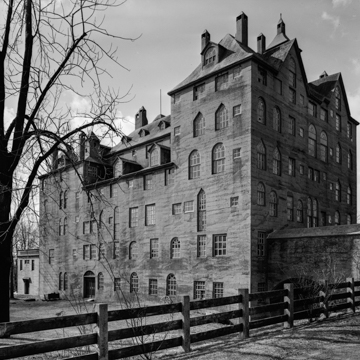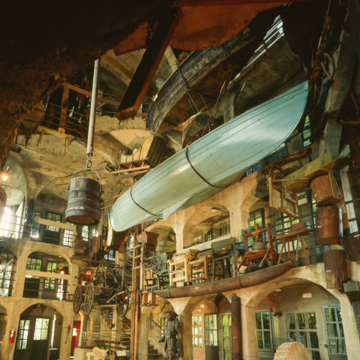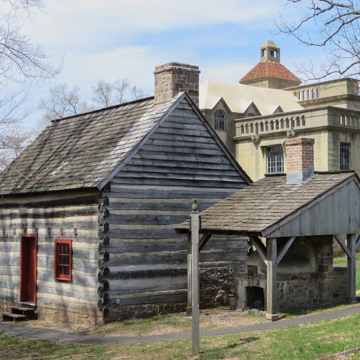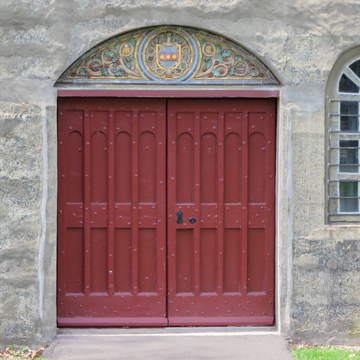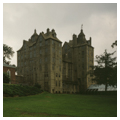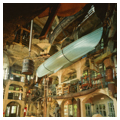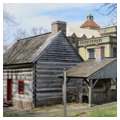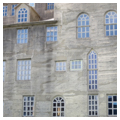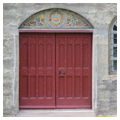The museum houses Henry Mercer's pioneering collection Tools of the Nation-Maker and marks his radically early interest as a cultural anthropologist in the common lives of everyday Americans. From the exterior, the building has a vaguely medieval massing, perhaps recalling the Ephrata Cloister (LA34) in its high roof interrupted with a picturesque array of tiny dormers and chimneys, but its plank-formed concrete is clearly of another order. Entered through a new entrance on the opposite side of the main facade from the intended access point, the building envelopes a multistoried interior court surrounded by balconies that provide access to an encircling array of cell-like rooms on the perimeter that form the organizational system of the collection. Each cell is devoted to housing the tools of a particular craft in a hierarchy that rises from the most primitive crafts at ground level to the most sophisticated products of the contemporary (1915) world. Systems of order
The c. 1800 log house on the grounds was moved here from N. Main Street. It exemplifies the ubiquity in southern Pennsylvania of log-built houses.







